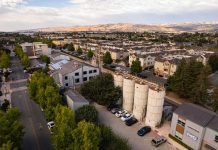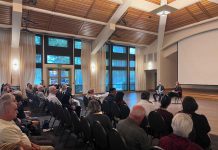Sometimes, what you can’t see can hurt you. Yes, I am talking
about air pollution. When someone mentions air pollution, many
think of smog, gray skies and air that makes breathing difficult.
Yet, not all air pollution is so visibly present.
Sometimes, what you can’t see can hurt you. Yes, I am talking about air pollution. When someone mentions air pollution, many think of smog, gray skies and air that makes breathing difficult. Yet, not all air pollution is so visibly present.
Carbon monoxide – colorless and odorless – reduces the amount of oxygen delivered to the body’s organs and tissues. Recent health studies have shown that air pollution causes a range of respiratory problems, harms lung development in children, contributes to early childhood asthma and is associated with a higher incidence of heart problems, including heart attacks. At the same time, recent scientific studies have shown that the detailed impacts of air emissions are a contributing factor to the all too real problem of global warming and the deteriorating health of our planet.
So even though the sky seems clear, we are still facing air pollution problems. As we sit in our cars hour after hour, we know that much of this pollution comes from our cars and trucks, especially those that use diesel fuel. As much as we try, many of us are still attached to our cars.
In order to better educate communities as to how we can all help improve the air quality throughout California, May has been declared Clean Air Month by both the American Lung Association and the Lung Association of California. This year, as part of Clean Air Month the Lung Association is launching “It All Adds Up to Cleaner Air,” a public education and partnership-building program. Two of the most important goals for the “It All Adds Up to Cleaner Air” program are to educate the public about the relationship between local transportation and air pollution issues, and to encourage individual choices that can help reduce air pollution.
The program points out that if each of us travels smarter, we can contribute to cleaner air. Common-sense practices that greatly help air quality include combining errands into a single trip, choosing alternative forms of transportation such as carpooling, mass transit or biking and keeping vehicles well-maintained so they burn fuel more efficiently. Some helpful suggestions are:
-Reduce breaking and quick acceleration. Cars use the least amount of gas when they maintain a consistent speed. Also, driving slower saves gas.
-Remove extra weight. While carrying around the golf clubs might be convenient, cars carrying extra weight use more gas.
-Minimize the use of air conditioning.
-Check tire pressure (all four). It takes more effort for the engine to propel an under inflated tire.
-Change the air filter. Change it more often if you live in a particularly dusty area, travel on dirt or gravel roads or if you off-road for sport.
-Make sure the spark plugs are firing properly. Replace them if they are due.
-Make sure the engine timing is appropriate.
-Inspect the exhaust system and muffler.
-Don’t buy the super high octane gas unless the owner’s manual recommends it or your engine “knocks” without it.
Sometimes we just need to be reminded that these little changes add up to make a difference. Protection of air quality requires a shared community commitment.
Assemblyman Bill Monning represents the 27 District, which includes Morgan Hill and San Martin.







